Jack Russell Dachshund Mix: Jackshund Breed Information
The Jackshund is a cross between the spirited Jack Russell Terrier and the clever Dachshund, forming a small to medium-sized dog full of energy and character.
With its long body and bold personality, this hybrid combines Jack Russell’s zest for life and the Dachshund’s sharp hunting skills, making it a fun-loving companion and a determined little dog.
These intelligent canines flourish with ongoing training and exercises that occupy their high prey drive and keen minds.
They usually make excellent family pets, but being descendants of strong hunters, their high prey drive means they should be monitored around small animals.
If you’re thinking of getting a Jackshund, be ready to stay active with them and keep up with their grooming needs.
While they generally maintain good health, Jackshunds can inherit specific ailments from their parent breeds, making regular canine vet check-ups crucial.
Key Takeaways
- Jackshunds blend Jack Russell energy with Dachshund intelligence.
- Engage in frequent play and training for their sharp minds.
- Regular vet visits are vital for their well-being.
Quick Facts
The Jackshund is a charming crossbreed that combines the qualities of the Jack Russell Terrier and the Dachshund. These dogs are intentionally bred to create a pet with the best traits of both parents.
A typical Jackshund puppy bears a robust body and short legs, a sign of its Dachshund lineage, and showcases the animated temperament of the Jack Russell. Their coat type may exhibit a variety of colors, which could include black with tan markings or a mixture of brown and white shades.
With attentive care, Jackshunds enjoy a long life and can be less prone to health problems common in purebreds, making them a resilient and affectionate pet choice.
Jack Russell Dachshund Mix: Jackshund Pictures
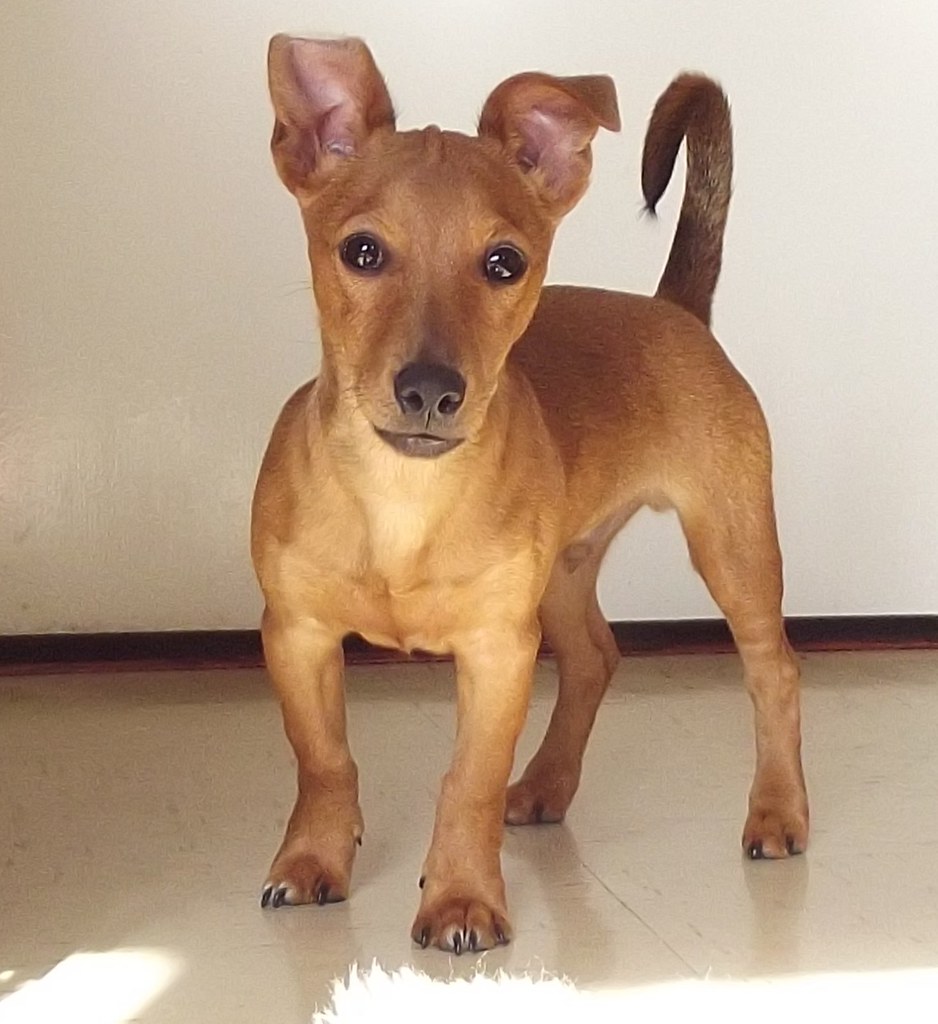
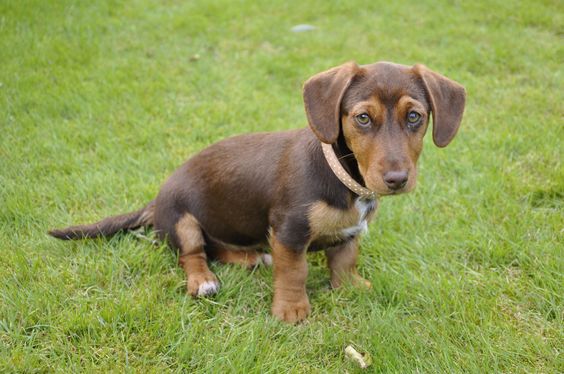
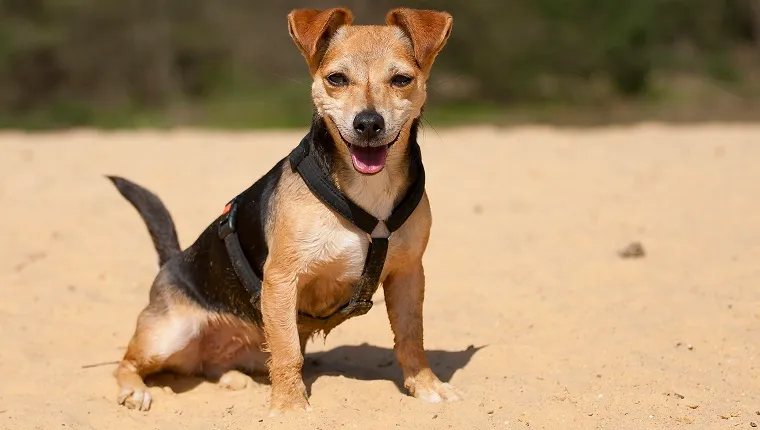
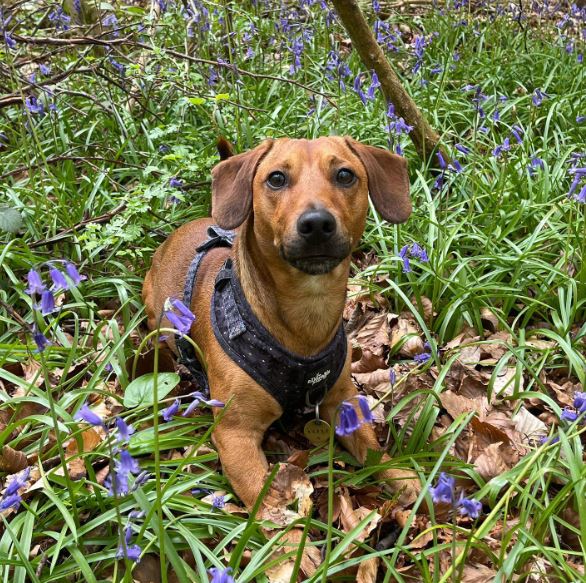


Overview
The Jackshund is a lively mix, merging the determination of the Jack Russell Terrier with the Dachshund’s distinctive long body. This crossbreed combines the best of both worlds: a playful nature with a unique look.
The Jackshund has the Dachshund’s recognizable shape, with a stretched-out body and sturdy legs. But it also gets a burst of energy from the Jack Russell side, known for their bold and active temperament.
Owners of a Jackshund can expect a dog that is both engaging and adaptive, fitting into a range of home environments with ease. This mix benefits from increased genetic variety, which can lead to a healthier and more adaptable pet. As a bonus, their mixed heritage gives them a charming appearance and a dynamic character that dog lovers find irresistible.
Key Traits of Dachshund Jack Russell Terrier
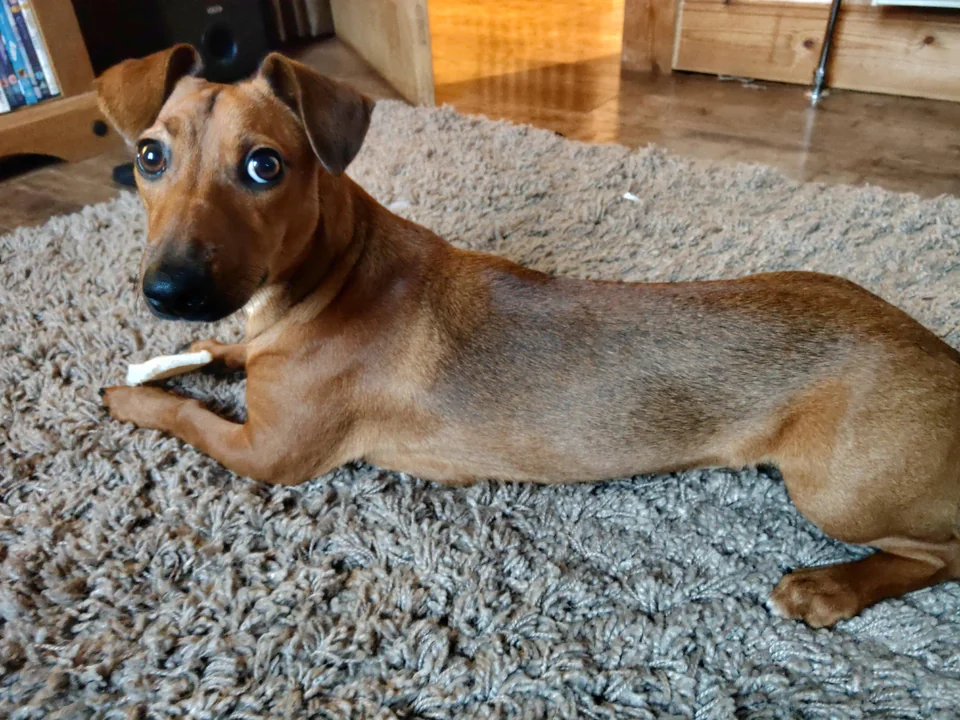
The Jackshund stands out with its distinct body shape and lively character. With a unique combination of a long body and sturdy legs, this crossbreed brings together the best qualities of its ancestors. Their size ranges from small to medium, making them versatile pets that can adapt to spacious homes and more compact apartments. Jackshunds are known for their warmth and energy, which endear them to their owners.
Owning a Jackshund means committing to regular exercise routines to satisfy their inherited instinct to chase, a trait from the Jack Russell Terrier’s hunting heritage. They might try to entertain themselves in less desirable ways without enough activity. These dogs prefer company and can experience anxiety when left alone for too long. Keeping them mentally engaged and close to their human companions is critical to their well-being.
| Trait | Description |
|---|---|
| Body Shape | Long with sturdy legs |
| Size | Adaptable to different living spaces |
| Personality | Warm, energetic, with a need for exercise and companionship |
Breed Origin Story

The Jackshund is a cross between the Jack Russell Terrier and the Dachshund, part of a growing interest in mixed-breed dogs. The rich histories of both parent breeds play a vital role in Jackshund’s traits, yet the reasons for their initial mix still spark curiosity.
The conversation about the benefits of mixed breeding, particularly concerning the Jackshund, is central to understanding this breed’s popularity and evolution.
The Jack Russell Terrier and the Dachshund were both bred for hunting, and these instincts still appear in the Jackshund. The idea of hybrid vigor suggests that crossbred dogs like the Jackshund may have improved health and qualities. People initially mixed the Jack Russell Terrier with the Dachshund to create a dog with distinct characteristics.
As Jackshunds are bred over multiple generations, their physical and behavioral traits become more pronounced and refined.
Parent Breeds History
The Jackshund is a hybrid dog with a rich history, thanks to the hunting talents of its parent breeds: the Dachshund and the Jack Russell Terrier.
Originating in 15th-century Germany, Dachshunds were skilled in hunting badgers, using their long bodies and sharp noses to excel in underground chases.
On the other hand, the Jack Russell Terrier, developed in 19th century England, was known for its energy in hunting foxes and controlling pests, using its quickness and smarts to flush out prey.
This crossbreed takes the best traits from both: the Dachshund’s exceptional tracking ability and the Jack Russell’s lively energy.
Hybrid Vigor Debate
The Jackshund, a cross between a Dachshund and a Jack Russell Terrier, is often at the center of discussions about hybrid vigor. This term describes the health and vitality benefits of mixing two different dog breeds.
Those who favor creating breeds like the Jackshund believe the combination can lead to a healthier gene pool, potentially reducing genetic disorders like hip dysplasia. On the other hand, some argue that this isn’t a guaranteed solution, as health issues might still emerge from each parent breed.
The Jackshund’s health and genetic makeup provide valuable insights into how mixing breeds affects health and inherited conditions.
Origin Purpose Exploration
The Jackshund is a unique breed, crafted to merge the Dachshund’s stubborn determination and burrowing prowess with the Jack Russell Terrier’s boundless energy and stamina.
Originating from Germany, the Dachshund brings its characteristic long body to the mix, designed for digging into badger dens.
On the other hand, the Jack Russell Terrier was developed in England for its vigor in chasing foxes, contributing to the Jackshund’s impressive agility and persistent nature.
Although the exact details of the Jackshund’s creation are not well-recorded, their role as a working dog with a rich heritage in hunting is unmistakable, blending outstanding traits from two historically skilled hunting breeds.
Physical Dimensions
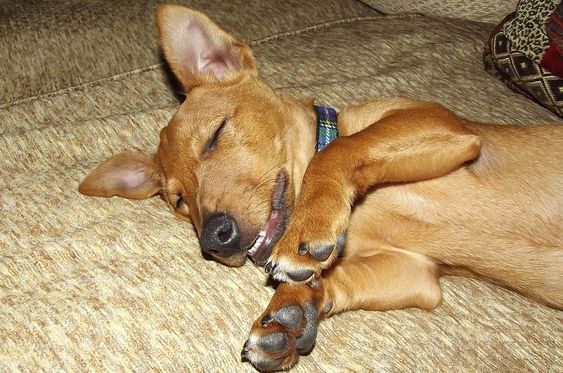
Jackshunds, a cross between Jack Russell Terriers and Dachshunds, display a wide range of sizes. This variation stems from the different genes they inherit from their parent breeds. Understanding this can help owners provide better care and make informed breeding decisions.
Size Variability in Jackshunds
The size of Jackshunds can vary greatly, and this is due to the genetic differences they inherit. Knowing about these variations is essential for recognizing what is typical for the breed and can aid in health assessments.
Standard Weight and Height
Owners and vets often look for a Jackshund’s weight and height to gauge its health. While there are standard measurements for the breed, individual dogs may vary, highlighting the need for personalized care.
Inherited Physical Traits
Jackshunds get their unique body shapes from their Jack Russell Terrier and Dachshund ancestors. These distinctive features can influence their health and how they should be cared for.
Growth and Development
The growth stages of a Jackshund significantly affect its body shape and size. Tracking these patterns is essential for ensuring the dogs develop healthily and maintain proper proportions throughout their lives.
Size Variation Range
Jackshunds, a cross between Dachshunds and Jack Russell Terriers, stand about 8-13 inches tall and weigh between 15-28 pounds. Their size varies due to the mix of their parent breeds’ traits. Genetics play a huge role in this diversity, as features from the Dachshund and the Jack Russell Terrier come into play.
An individual dog’s metabolism and level of physical activity are also critical in determining their weight. To keep a Jackshund healthy and avoid weight-related issues, it’s vital to monitor their diet and ensure they get regular exercise. This approach helps maintain their weight within an ideal range and supports their unique body shape.
Weight and Height
Jackshunds, a cross between Dachshunds and Jack Russell Terriers, typically weigh 15-28 pounds and stand about 8-13 inches tall. These dogs fall into the small to medium category.
The physical traits of a Jackshund, including weight and stature, result from the more substantial genetic influence from either the Dachshund or the Jack Russell Terrier. Generally, the Dachshund’s genes give the Jackshund its distinctive long body and short legs, which play a role in determining the dog’s overall size.
Owners should work closely with veterinarians to create a tailored diet and exercise regimen for their Jackshund to keep the dog at a healthy weight suited to its specific body shape and size. Proper care will help ensure these active and lively dogs have a good quality of life.
Breed-Specific Traits
Jackshunds stand out due to their distinct shape, combining the Dachshund’s long body with the compact muscularity of the Jack Russell Terrier. This mix gives them a dynamic build that’s both sturdy and agile, ideal for an active lifestyle.
They typically weigh between 15 to 28 pounds and stand 8 to 13 inches tall, which may seem petite, but these dogs are surprisingly strong. Given their energetic nature, Jackshunds thrive on daily activities and mental challenges to keep them engaged.
Their size and build allow them quickness and agility, which helps them excel in learning new skills and responding well to training. Depending on their mix, their coats vary and will need care suited to their specific type, reflecting their mixed Jack Russell Terrier and Dachshund heritage.
Growth Patterns
Jackshunds, the mix of Jack Russell Terrier and Dachshund, usually reach their full size around 12 months. However, their growth rate can differ due to genetics and the quality of care they receive as puppies.
Proper nutrition, sufficient exercise, and regular health check-ups significantly affect their size as they near their first birthday. These dogs often have the Dachshund’s distinctive short legs and stout body, while their faces tend to resemble that of the Jack Russell Terrier.
Knowing how a Jackshund grows is vital for keeping them in good shape and preventing weight issues during their early years.
Body Proportion Considerations
Knowing how to assess the body proportions of a Jackshund is critical to maintaining their health. This mix of Jack Russell Terrier and Dachshund inherits a range of physical features from both breeds that affect their build. The Jackshund often has a compact body similar to a Dachshund, with short legs that can limit their agility and mobility. This breed’s height can be anywhere from 8 to 23 inches, and a healthy weight is usually between 15 and 28 pounds.
Behavioral Traits

The Jackshund, a cross between a Jack Russell Terrier and a Dachshund, exhibits behaviors that stem from their hunting instincts and need for companionship. Proper training and socialization can help manage separation anxiety and keep their minds active. Understanding these traits is critical to raising a well-behaved and contented dog.
- Techniques for managing the strong hunting instincts of Jackshunds.
- Effective ways to socialize Jackshunds with other pets and people.
- Common training challenges with Jackshunds and how to overcome them.
- Strategies for reducing separation anxiety and keeping Jackshunds mentally engaged.
Jackshunds have a strong prey drive, which can be moderated with consistent training that redirects their focus. Interactive toys and games simulating hunting can satisfy their instincts in a controlled environment.
For socialization, exposing them to various situations, animals, and people from a young age can promote good behavior.
When training a Jackshund, patience, and consistency are essential. These dogs may exhibit stubbornness, so positive reinforcement and clear boundaries are crucial.
Creating a routine and providing distractions like puzzle toys can help address separation anxiety. Keeping them mentally stimulated with training sessions and playtime benefits their well-being.
Prey Drive Management
Managing a Jackshund’s prey drive needs regular training to balance their natural hunting instincts and help them become well-behaved pets. These dogs inherit strong chasing instincts from ancestors like the Jack Russell Terrier.
Positive reinforcement-based training can effectively control these tendencies, leading to better impulse management and a smoother transition to family life. Owners should dedicate time to structured training that mentally stimulates the Jackshund and provides plenty of exercise to fulfill their physical activity needs.
Training emphasizing recall and obedience is vital for these former hunting dogs to prevent them from resisting their urge to chase and roam.
Socialization Techniques
Teaching Jackshunds how to interact and behave is vital for overcoming their natural hunting instincts and helping them adapt to different situations. Starting to train and socialize them early in their lives helps to build positive traits like calmness and friendliness.
When Jackshunds get used to various sights, sounds, and experiences early on, they grow into well-adjusted dogs. Regular practice in following commands and displaying good behavior makes the most of their smarts.
A well-planned approach to meeting new animals, people, and kids can turn a Jackshund into a delightful family pet.
Training Challenges
Training Jackshunds can be difficult due to their stubborn nature and strong prey drive. These characteristics require a patient and consistent approach to training. Understanding the breed’s high energy levels is vital to keeping them engaged during training sessions. Positive reinforcement, like treats and praise, is very effective in motivating a Jackshund and can help overcome their stubbornness.
For those looking to train a Jackshund, combining mental stimulation with structured and fun training is essential. This approach takes advantage of the dog’s intelligence and love for play, making training a rewarding experience for both the dog and the trainer.
Separation Anxiety Solutions
Jackshunds can find it hard to cope when they’re left on their own, so setting up ways to deal with their separation anxiety is critical to keeping them happy. As a breed that thrives on the company, Jackshunds might get upset if they’re by themselves too much.
A consistent daily routine helps them know what to expect and stay calm alone. Using rewards to encourage them when they handle being alone well can also reassure you as the owner.
Interactive toys and puzzles are great for keeping their minds busy and can lessen their stress. It’s also vital to consider how each Jackshund acts individually to find the most helpful ways to soothe their anxiety.
Stimulating Mental Activities
Mixing different brain-stimulating activities into your Jackshund’s daily schedule is critical to using their smarts and vitality positively. Jackshunds have lots of energy and a knack for learning tricks, which keeps their brain busy and helps build a strong connection with their human companions.
Giving them snacks as a reward for completing tasks is an excellent way to promote good behavior and mental work. Brain games, like puzzles and interactive challenges, can help avoid behavior problems by giving them a way to use their intelligence.
Playing fetch is excellent, too, as it gives them both physical activity and mental focus, meeting their natural needs and helping to prevent bad habits from forming.
Health Considerations
If you’re looking into getting a Jackshund, knowing about their health issues and how to prevent them is brilliant. These dogs can inherit specific problems, and being proactive about their health can keep them happy and active. Before bringing a Jackshund into your home, it’s good to research their health concerns and how long they usually live. This way, you can plan for a healthy life together.
Common genetic disorders can affect Jackshund’s quality of life, so be aware of these and discuss them with a vet. Knowing the expected lifespan of a Jackshund helps you understand what to expect as your pet ages. Taking steps early on, like regular check-ups and a healthy diet, can help prevent some health issues common to the breed. Catching problems early can make a big difference in managing your Jackshund’s health, so regular vet visits are essential.
Common Genetic Disorders
Jackshunds, a cross between the Jack Russell Terrier and the Dachshund, can inherit specific health issues from their parents. Owners should be aware of patellar luxation and intervertebral disc disease, which are common in these breeds. Patellar luxation involves the dislocation of the kneecap and can lead to pain and difficulty moving. Intervertebral disc disease affects the spine’s discs and is a serious concern due to the Dachshund’s long back.
To keep your Jackshund healthy, maintain a schedule of regular vet visits and provide a diet and exercise plan suited to their needs. This proactive approach helps manage these conditions and supports your pet’s overall health.
Lifespan Expectancy
Jackshunds, a cross between the Jack Russell Terrier and Dachshund, typically live for 12 to 15 years. This breed benefits from the mixed genetic advantages often seen in crossbreeds, which can lead to a healthier and longer life.
However, owners need to stay alert to health issues that may arise. Proactive care, which encompasses consistent vet appointments, a diet that meets their unique needs, and regular physical activity, is crucial in preventing common health problems like knee and back issues.
These steps can help these small dogs enjoy a whole and healthy life.
Preventative Health Measures
Caring for a Jackshund means staying on top of their health with routine vet check-ups. Early detection of conditions like patellar luxation and intervertebral disc disease can make a massive difference in treatment and outcomes.
A well-managed diet is critical to preventing obesity, which worsens joint problems. Make sure their food matches their size, life stage, and how active they are.
Regular exercise keeps a Jackshund’s joints in good shape and supports their overall health. Don’t forget about ear care; checking for infections helps avoid complications. Grooming, including coat stripping, is vital for skin health.
These steps prevent problems and ensure a happy, vibrant life for your clever and active Jackshund.
Maintenance & Well-being
Caring for a Jackshund requires attention to both their physical and mental health. This includes regular grooming, a balanced diet, consistent health check-ups, and appropriate exercise to keep them happy and healthy. Training is also essential for their ability to adjust to different home settings, such as smaller spaces like apartments. Understanding these care aspects helps create a nurturing environment for your pet.
Grooming Needs – Regular brushing, ear cleaning, and nail clipping are part of keeping your Jackshund looking and feeling great.
Nutritional Needs – A diet tailored to their size and activity level helps keep your Jackshund healthy
Healthcare Routine – Scheduled vet appointments and preventative care are vital to catching any issues early.
Activity Levels – Activities that suit their energetic nature and keep their minds sharp are vital for Jackshund’s well-being.
Grooming Requirements
For a healthy and good-looking Jackshund, proper grooming is vital. If your Jackshund has a double coat, you must be thorough with their grooming. Brushing multiple times a week is crucial to avoid knots and to keep their skin oils well-distributed, which is vital for a shiny and healthy coat. Dogs with longer fur might get tangles and collect dirt, so regular haircuts are recommended to keep their skin trouble-free.
In addition to coat care, don’t forget about ear cleaning, teeth brushing, and nail clipping. These practices are essential to prevent potential infections and other health problems. Keeping up with these grooming habits will make your Jackshund look tremendous and support their overall health.
Dietary Considerations
Jackshunds thrive when fed a diet tailored to their energetic nature and small size. High-quality dry food designed for small, active dogs is ideal, helping to keep them energized while preventing weight gain. Managing their meal portions is critical, with the perfect approach splitting their food intake into two servings daily for optimal health.
Regular physical activity and mental stimulation are vital for these dogs to avoid unwanted behaviors, especially when they spend much time alone. Keeping up with their exercise, diet, and regular vet visits is essential in catching and managing any hereditary health issues early, such as patellar luxation or intervertebral disc disease, keeping them healthy and happy.
Health Check Schedules
Scheduling veterinary check-ups regularly is vital for the well-being of a Jackshund, especially for catching hereditary health issues early. These dogs, a mix between a Jack Russell Terrier and a Dachshund, can be prone to specific ailments. Regular vet visits are vital for spotting problems like knee dislocation and spinal issues early on.
Jackshunds need good exercise for a healthy life—around 30 to 45 minutes daily. This helps them avoid weight issues and keeps them in great shape. While they must stay active, too much strenuous activity can be harmful. Regular vet supervision helps these energetic pups find the right exercise and health care balance.
Exercise Regimens
Keeping a Jackshund healthy and sharp requires a regular exercise routine tailored to its lively nature and smarts. These dogs need a lot of physical activity, usually around 30-45 minutes daily.
You can meet their exercise needs through extended walks that burn off their high energy and stimulate their senses, which is vital for their mental health. Engaging them in dog sports like agility or flyball can be a great way to use their natural skill and love for solving problems, providing a well-rounded physical and mental challenge.
Playing interactive games is another excellent way to work their brains and strengthen the bond between pet and owner. A well-planned exercise schedule helps keep them fit and happy.
Behavioral Training Tips
Jackshunds, known for their sharp minds and lively disposition, thrive when given regular behavioral training. This is essential for their happiness and helps them adapt to apartment living. Originating from the Jack Russell terrier, these dogs are fearless, and without proper guidance, they might develop unwanted habits.
A good training strategy includes setting a routine that makes the most of their playful nature and high energy. This approach prevents issues like excessive barking or anxiety. Intense training sessions that challenge their minds and tire them out can help avoid problems that often come with living in a small space.
Teaching good behavior is crucial and requires your patience and perseverance due to their strong-willed character. Overall, practical training for a Jackshund uses their smarts and energy to shape a happy, well-behaved pet.
Dietary Requirements
Jackshunds, a mix between Jack Russell Terriers and Dachshunds, have specific dietary needs that owners should carefully manage to keep them healthy and active. A well-thought-out diet prevents health issues and meets their energetic demands. Owners should choose foods rich in nutrients suitable for the breed’s high-energy needs and consider special diets for those with allergies or intolerances. Regular feeding times help regulate their digestion and energy levels.
It’s also vital to balance proteins, fats, carbohydrates, vitamins, and minerals to support their health and avoid overweight issues. For Jackshunds with sensitive stomachs, incorporating hypoallergenic options can make a huge difference. A consistent eating schedule helps them digest better and match their energy use. Ensuring their meals are well-rounded with macronutrients and micronutrients is critical to a long, vibrant life for your Jackshund.
Optimal Food Choices
Choosing the proper diet for a Jackshund is vital for their well-being and to match their active nature. Since the Jackshund is a mix of the Jack Russell Terrier and the Dachshund, their food needs to support the health characteristics of both breeds.
It’s best to give them high-quality kibble tailored to their specific size, age, and energy levels to ensure they flourish, especially if they live in an apartment. A well-rounded diet is crucial, giving them the right amount of macronutrients to fuel their energy while preventing weight gain.
Regular exercise and measured meals twice a day are essential. Experts suggest a diet with plenty of protein, reasonable fats, and vitamins and minerals to keep them lively and robust.
Allergy-Specific Diets
Owners of Jackshunds should pay close attention to their pet’s diet, especially if the dog shows signs of food sensitivities. This mixed breed, a combination of the Jack Russell Terrier and the Dachshund, may inherit specific allergies from either parent breeds.
An effective way to manage these allergies is through diets with either hypoallergenic ingredients or a limited number of components to reduce the risk of a reaction. Consultation with a veterinarian is critical to tailor a diet plan that considers Jackshund’s unique needs and maintains its overall well-being.
The type of coat, whether wiry or smooth, can also influence the kind of skin issues the Jackshund might experience due to food allergies.
Feeding Schedule Importance
Creating a regular feeding timetable is vital for Jackshund’s well-being and to keep up with their lively nature. A well-planned feeding routine ensures they get the proper nutrients to stay healthy and manage weight.
Owners must serve two properly portioned meals daily, considering the dog’s size, age, and energy needs. Due to their Jack Russell Terrier heritage, Jackshunds are pretty active and need a balanced diet to maintain their energy levels and prevent weight gain.
Calculating the food amount based on the dog’s activity helps meet their specific dietary needs, highlighting the need for precise and mindful feeding practices.
